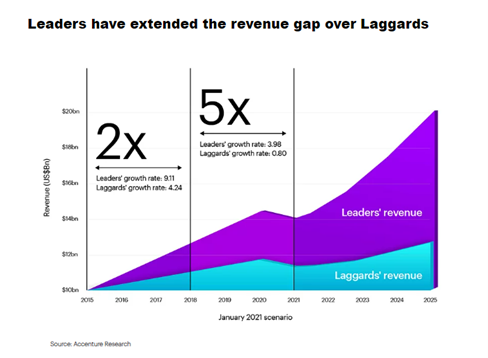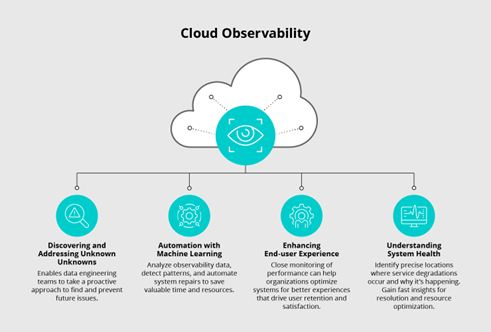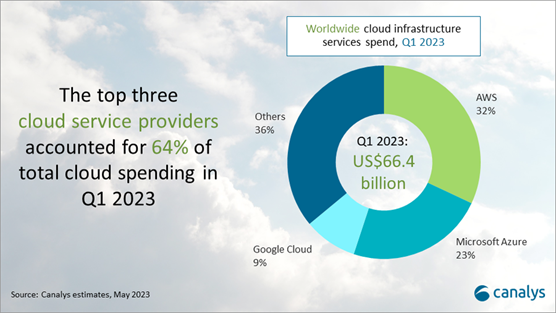SAP Cloud Migration Strategy: A Complete Guide
There’s no doubt about it: The future of business is on the cloud.
For long-time SAP organizations, that means moving critical systems and applications to a brand new operating environment. Building a SAP migration strategy that takes advantage of all the cloud has to offer while staying true to what’s already working for your business can feel like a daunting prospect.
But companies that are taking the leap and moving to the cloud are getting ahead. The cloud is driving faster innovation, higher cost savings, and better collaborations across remote and hybrid modern workplaces.
If you know the time is now to build your SAP cloud migration strategy but aren’t sure where to start, this guide is right for you. In the sections that follow we’ll explore why your company should move its SAP systems to the cloud sooner rather than later, the benefits you’ll experience from doing so, steps for implementation, and ways to overcome common migration challenges.
Quick Takeaways
- Companies are already operating more than half of their workloads on the cloud, and 95% of new workloads will be cloud-native by 2025.
- A quality SAP cloud migration strategy can help you optimize costs, enhance cloud security, achieve greater flexibility and scalability, and strategically leverage innovative cloud features.
- Successful cloud migrations begin with a thorough self-assessment and detailed goal setting.
- Knowing the difference between SAP RISE vs. HANA is important to determine the right cloud migration path for your business.
- Partnering with an expert SAP cloud migration service provider is the surest way to execute a migration that’s well-designed, well-executed, and free of unexpected issues.
Why is SAP Cloud Migration So Important Right Now?
Today’s fast-paced business world is driven by continual technological advancements, changing customer expectations, and global hyperconnectivity. Organizations in every industry are under unprecedented pressure to be agile and innovative.
For modern and wide-sweeping systems like SAP, traditional on-premise environments simply can not deliver those capabilities. To stay competitive, companies must move their SAP systems to the cloud.
In recent years, more companies have taken the lead and have begun migrating to the cloud at an accelerated pace. More than half of all workloads now live in the public cloud for enterprises and small businesses alike, and Gartner predicts that 95% of all new digital workloads will be deployed in cloud-native environments by 2025.
Separate research by Accenture shows a clear competitive advantage for organizations that take the lead and adopt new technologies—like the cloud—earlier than others. They grow 5X faster than laggard counterparts and earn revenue at 2X the speed.

The imperative is clear: Developing a SAP cloud migration strategy is something every business should be prioritizing now. Let’s look at some of the compelling benefits companies experience from moving to the cloud.
Benefits of SAP Cloud Migration
Cost Optimization
SAP cloud migration significantly reduces the operational cost of maintaining on-premise hardware and infrastructure.
While traditional SAP deployments require substantial investments in hardware, maintenance, and personnel, the cloud allows organizations to shift from a capital expenditure (CapEx) model to one that’s driven by an operational expenditure (OpEx) model for greater cost predictability and optimization.
At the same time, the cloud drives operational efficiencies by facilitating streamlined workflows, greater collaboration, and data-driven decision making on a daily basis.
Enhanced Security
There’s no doubt that cloud environments bring new types of security challenges that don’t exist in a solely on-premise environment. But there’s no turning back from the digital, cloud-connected world in which we now live.
One of the most important advantages of moving SAP systems to the cloud is an enhanced security model equipped to protect them from modern threats—namely, cyber adversaries who are becoming more sophisticated as technology does the same.
Cloud-based IT security is highly automated and continually improved to stay up-to-date with industry demands. Robust security measures like data encryption, automated threat detection, and continuous monitoring ensure your critical business data remains safe and protects you from breaches.
Higher Flexibility and Scalability
With your SAP cloud migration strategy, you can drive better resource optimization thanks to the flexibility and scalability offered by cloud operations. The cloud enables companies to easily scale SAP applications and resources up or down based on seasonality or current demands.
SAP cloud solutions can also easily accommodate increasing workloads without the need for extensive hardware upgrades. This ensures your SAP systems can adapt to growth seamlessly.
All in all, moving SAP systems to the cloud will allow your business to operate with greater agility and meet changing business needs more effectively.
Greater Resilience
Cloud environments offer high availability and disaster recovery options that are more robust than what can be achieved with on-premises solutions. This helps to minimize downtime and ensure continuous operations, even in the face of unexpected disruptions.
Further, the cloud offers higher levels of observability so that you can anticipate and prevent unplanned downtime before it occurs, or at the very least execute faster disaster recovery.

Innovative Cloud Features
Leading hyperscalers in the cloud hosting industry such as Amazon Web Services (AWS), Microsoft Azure, and Google Cloud are known for their high levels of innovation and responsiveness to customer needs. By moving your SAP systems to the cloud, you’ll gain access to innovative and often SAP-specific features that drive higher levels of innovation at your own organization.
Competitive Advantage
As mentioned already, a forward-thinking, innovative SAP cloud migration strategy puts you a step ahead of competitors that stay loyal to legacy systems no longer serving their business needs. On the cloud, you can act faster to identify and pursue new opportunities, gain new levels of data-driven insight, and uplevel your ability to deliver an exceptional customer experience.
Rise with SAP vs. S/4HANA: Which is Best?
Before we dive into action steps for moving to the cloud, it’s essential to understand the pathways available to SAP organizations. There are two primary avenues companies can take: RISE with SAP or a straightforward migration to SAP S/4HANA cloud.
Knowing the difference between SAP RISE vs. SAP HANA is crucial to developing the right migration plan for your business. Here’s a quick breakdown:
Rise with SAP
SAP’s all-encompassing business transformation as-a-service, RISE is designed to help businesses execute a SAP HANA migration while also enabling important business process transformations. RISE with SAP is offered through a bundled subscription business model that includes the SAP S/4HANA cloud and other tools and services, providing a holistic approach to cloud migration.
Thanks to SAP’s close partnerships with major cloud hyperscalers, it’s easy to run RISE with SAP on AWS, Azure, Google Cloud, and other major platforms.
SAP S/4HANA Cloud
This option is more singularly focused on the technical migration aspect, helping businesses move their existing SAP systems to a cloud environment. SAP S/4HANA is one component of the larger RISE program, and is suitable for businesses that are primarily looking to modernize their ERP system and benefit from cloud capabilities, without necessarily undertaking a full-scale business process transformation.
Understanding the differences between RISE with SAP vs. S/4HANA is crucial before you begin executing your SAP cloud migration. It ensures you fully understand how SAP cloud services options align with your business needs, as well as which overarching migration path is best for your unique organization.
5 Steps for Moving SAP to the Cloud
Assess Your Existing SAP Environment
Before launching a new SAP cloud migration strategy, assess your current SAP environment. Evaluate what’s working well in your current environment and areas that need improvement. Identify what your top priorities need to be as you move to the cloud, including which components are cloud-compatible and which need to be updated before migration.
Formalize your assessment by documenting it thoroughly and sharing it with key stakeholders in your organization who will play a role in executing your migration plan.
Protera’s SAP self-assessment tool, Protera CloudVantage, can help you automate and execute this step.
Define Your Goals
Once you have a strong handle on where your current SAP systems stand, define the goals you want to accomplish with your SAP cloud migration strategy. Be specific about the metrics and KPIs you’ll measure and specific outcomes you want to achieve.
Create a Cloud Migration Roadmap
Next, document your SAP cloud migration plan using a migration roadmap. Your roadmap should detail each planned phase of your cloud migration and what will happen at each one. Include high-level goals and milestones as well as specific deliverables, deadlines, and individuals responsible for executing.
This type of roadmap is usually best created and followed on a cloud migration platform that can update automatically and provides a single source of truth for all stakeholders involved.
Choose a Cloud Platform
There are many high-quality cloud providers on the market, but the right one for you depends on your specific needs, preferences, and current partnerships. For example: A company that already works with Microsoft programs and interfaces may choose the Azure cloud for consistency.
If you don’t have a current allegiance, you’ll want to do your due diligence and choose the one that best fits your organization and its goals.
Today, AWS, Azure, and Google Cloud are far and away the most-preferred cloud providers by SAP (and all) organizations moving to the cloud, collectively, owning 64% of the market.

Partner with a SAP Cloud Migration Expert
Moving your SAP systems to the cloud is a complex process. No matter how exceptional your IT team is, there’s a level of SAP- and cloud-specific expertise and experience needed to avoid an unstable migration that most internal teams simply don’t have.
That’s why many organizations choose to work with a SAP-certified migration partner to guide them. The benefits to hiring a migration partner are numerous—you’ll access deep levels of SAP knowledge, agile problem-solving skills that only come with extensive experience, and a network of SAP partners that can help you succeed.
Plus, you’ll be able to streamline your migration process, reduce risk, and optimize costs at every step of the way. SAP migration service providers have proven best-practice processes in place that they can help you implement while customizing as needed.
SAP Cloud Migration Challenges to Overcome
Leadership Buy-In
Migrating to the cloud inevitably comes with change. Even if end users and employees don’t experience significant changes day-to-day, the internal workings of your IT environment and its cost structure will be fundamentally altered by a new SAP cloud migration strategy.
In some cases, company leaders who don’t have IT expertise (or even some that do) may resist this change. You can prepare to build buy-in for your strategy by outlining its organizational benefits and by tailoring messaging to individual stakeholders. For example: Your CFO will care more about financial benefits, while your CDO will want to know more about how data will be preserved and protected in a new cloud environment.
The more you can demonstrate the value the cloud will bring to your company, the better able you’ll be to get stakeholders on board with the plan.
Data Migration
Today, every business generates vast amounts of data, and migrating all this data to the cloud while maintaining its integrity and structure can be daunting. Ensuring that data relationships, formatting, and metadata are preserved during the migration process is a significant challenge for many companies, especially those with intricate data structures.
Finding the best way to navigate these data-related challenges is one of the key motivators for hiring a third-party expert to support your migration.
Executing Without Disruption
SAP systems support the most fundamental functional, mission-critical activities of a business. One of the top concerns for SAP organizations migrating to the cloud is the potential disruption to business-as-usual during the actual migration process.
Downtime is costly—thousands of dollars can be lost per minute when systems go down. It’s important to plan your migration carefully and intentionally to avoid this from happening. This requires a phased migration approach and extensive testing throughout the entire process, something your SAP migration service provider can help you implement.
Do You Have the Right SAP Cloud Migration Strategy?
Planning your SAP cloud migration strategy is a huge step forward for your business. But in order to reach your cloud goals and avoid unexpected pitfalls, you need the right expertise and tools to help you execute effectively.
If you’re preparing to launch a migration strategy for your SAP systems, Protera is here to help. No matter where you are on your SAP cloud journey, Protera’s suite of cloud migration and modernization services can help you migrate with confidence.
Learn more about Protera’s SAP cloud migration services today.